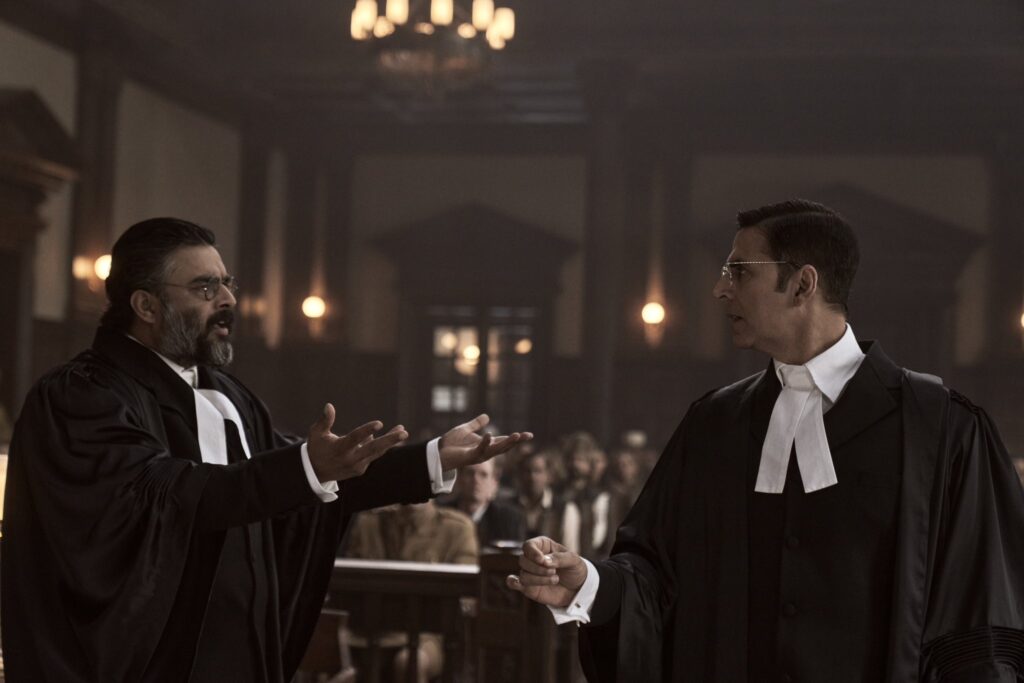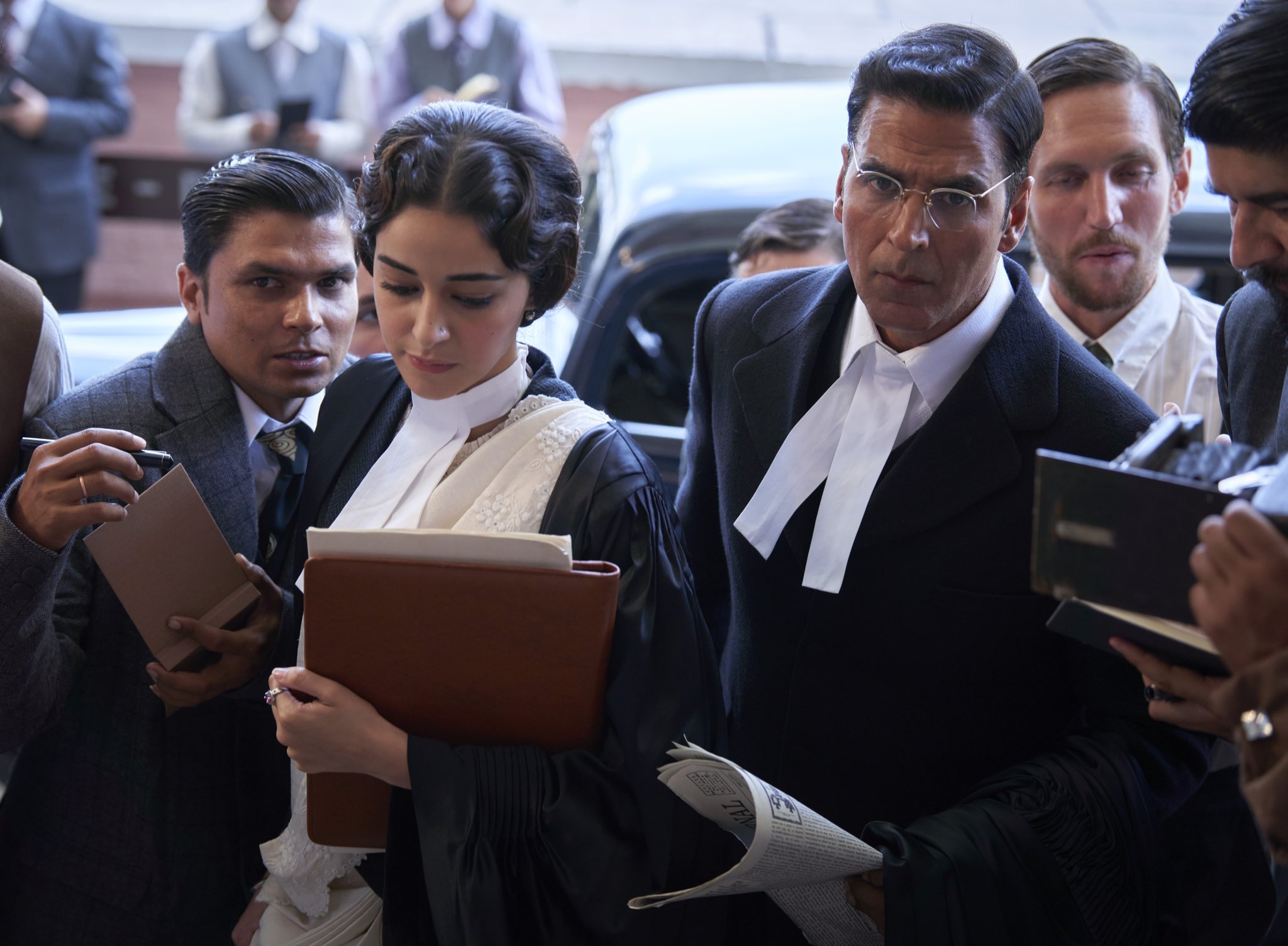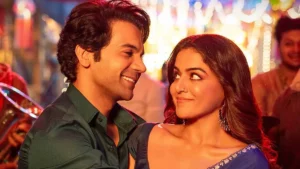
Unless you live under a rock that doesn’t entertain internet banalities, it’s unlikely you haven’t come across an Akshay Kumar biopic meme. The man would gladly portray anyone as long as there’s scope for a patriotic twist. Sunita Williams’ recent return to Earth made way for a meme fest for the same reason. It is less about serving the cause of cinema or propagating the valor of the subject. The real focus lies in the template, which the actor has mastered over the years and Bollywood watchers have grown accustomed to. Occasionally, these films hit the bull’s eye, depending on the filmmaker’s calibre. But lately, there’s a clear sense of fatigue. In Karan Singh Tyagi’s Kesari Chapter 2, Akshay Kumar takes on the role of the famed barrister Sir Sankaran Nair, who sought justice for the victims of the Jallianwala Bagh Massacre.
Now, Mr. Nair is an unlikely candidate for a Bollywood biopic, let alone a grand one headlined by Akshay Kumar. After all, we live in an era where it’s less convenient to reconcile Bollywood’s brand of nationalism with the beef-eating, Communist-leaning state of Kerala. History, however, holds undeniable proof that patriotism has never been confined by caste, creed, colour, or religion. So, regardless of how it ultimately turns out, Kesari Chapter 2 remains a story worth telling, if only to highlight how a Malayali man once took a stand for native Punjabis, forming a cultural alliance that feels all the more unique in today’s fractured times.
The blessing in disguise is Akshay Kumar playing Nair. Overworked by choice, he doesn’t have the time to internalize a character the way Ranveer Singh might, which is just as well since fake accents, antics, and mimicry in the name of authenticity are the last things one would want in a Hindi period film about a South Indian man. Thankfully, Dharma Productions didn’t feel the urge to remix ‘Jiya Jale Jaan Jale’ to give our Malayali man an entry anthem either. The extent of cultural appropriation here is limited to him performing Kathakali (why?), and wearing some tasteful dhotis and sandalwood paste. Beyond that, Nair is Kumar. Kumar is Nair. And I appreciate that about the film for allowing both him and us to focus on just one thing.
Yes, the biggest plus of Kesari Chapter 2 is that it does not stray from its singular focus, which is to prove General Dyer guilty of the massacre in Amritsar. The screenplay is deliberately conventional, yet it avoids inserting elements that might have diluted the sanctity of Nair’s mission. There’s a subtle but conscious undercurrent promoting Hindu-Muslim unity, and a side-track involving a Muslim soldier adds a meaningful layer to the larger narrative. The primary female character is Dilreet Gill (Ananya Panday), a rookie lawyer reminiscent of Rani Mukerji’s Saamiya Siddiqui from Veer-Zaara. She appears nervous and vulnerable, yes, but that only works in the film’s favour. In one standout sequence where the film (and Kumar) steps back to let her shine, Ananya breathes fire in her own quiet, individualistic way.

In the form of Dyer, Kesari Chapter 2 presents a merciless villain. Watching him squeak, shriek, and contort his face in bizarre ways like the flamboyant villains from yesteryears is quite a joy. Simon Paisley Day’s portrayal is so strikingly Hitler-esque that we find ourselves more invested in his downfall than in Nair and Gill’s eventual triumph. This, however, highlights an anomaly in the writing by Karan Singh Tyagi, Amritpal Singh Bindra, and Sumit Saxena. The film rarely feels like a story of collective victory for the Punjabi people, who are the ones living with the trauma of losing their loved ones. The film reduces them to voiceless bystanders during the court proceedings – the film’s mainstay. As if to compensate, Kesari Chapter 2 makes a thoughtful attempt to personalize the narrative through Nair’s (and Gill’s) interaction with a local Punjabi boy. His words, actions, and ultimate fate leave an impact on them. Even though this narrative device adds emotional weight to the conflict, the wider societal impact of Nair’s intervention is what truly deserves emphasis.
While Nair, Dyer, and Gill are largely well-realized characters in Kesari Chapter 2, R. Madhavan’s Neville McKinley feels neither here nor there. Does he convincingly look like a half-British, half-Indian hybrid? Not quite. Is there any clear reason for this supposedly astute lawyer to suddenly harbor resentment toward his old friend Nair? Again, no. Do his actions significantly impact the film or his client, Dyer? Not really. As a result, McKinley ends up as a talking wall piece whose relevance quickly fades once Nair and Gill grill his first witness. While the filmmakers’ choice to cast an Indian star in this role might have been aimed at boosting the film’s overall star power, it adds little to Madhavan’s otherwise carefully curated Bollywood filmography.
ALSO READ: ‘Sardar Udham’ review – Shoojit Sircar’s film sets a golden benchmark for Bollywood historicals
A point of contention could be that while Kesari Chapter 2 uses certain real names in key roles, the central narrative is almost entirely fictional. It portrays Nair as the direct prosecutor of the massacre, turning it into a personal crusade, and even shows him using expletives in a court of law. The film often overlooks the man’s stature and legacy to create crowd-pleasing moments. That said, if the setting had been completely fictional, the hyper-nationalistic tone might still have been acceptable. What stood out to me was the lack of imagination here. The repeated use of curse words to create an impact felt unrealistic for the era it is set in and unnecessary for the times we live in. It is particularly annoying because we have seen similar films before, including those starring Akshay Kumar, which delivered powerful moments without giving in to the trickery of verbal abuse.
While the screenplay and dialogues fall short, Karan Singh Tyagi’s film scores in its direction. The filmmaker seems to know the Akshay Kumar patriotism template and delivers a more polished effort than most of his recent films. Despite the high decibel levels, Debojeet Ray’s camera angles feel bolder than expected in a film of this kind. Editor Nitin Baid weaves past and present together, keeping the narrative engaging and preserving the aura around Nair throughout. The songs (Shashwat Sachdev, Kavita Seth, and Kanishk Seth) feel as though they were recorded for another film, perhaps the original Kesari. Rita Ghosh’s production design and Sheetal Sharma’s costumes enhance the film’s appeal despite their inherent dressiness.
As noted before, Kesari Chapter 2 deserves credit for resisting over-the-top cultural appropriation and avoiding saffronization. Even though it remains an Akshay Kumar vehicle and a heavily fictionalized account of real events, it plays a vital role in reminding Indians of the true horror of the Jallianwala Bagh massacre. There is only one truth to this blood-stained chapter in India’s history, and the British Empire does not deserve an ounce of sympathy for the irreparable damage it inflicted on our vibrant culture. At the very least, films like Kesari Chapter 2 should urge us to reflect on our history and reclaim narratives that honor our legacy, rather than seeking validation from the West.
Rating: ★★★

